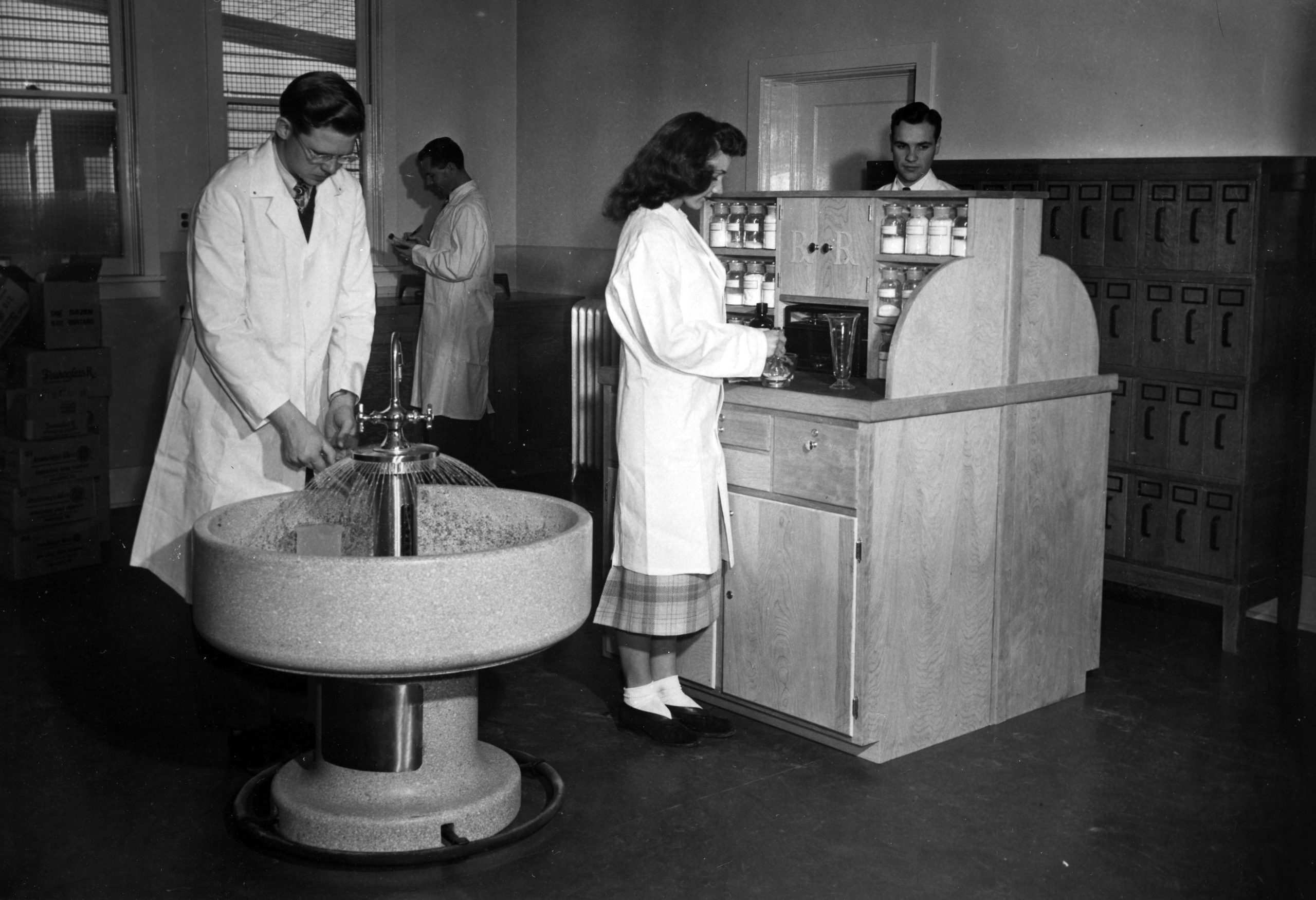Early pharmacy education at the University of Utah experienced considerable growing pains. Although 1917 saw the advent of the Department of Pharmacy, situated within the College of Medicine, the department was forced to close in 1927 due to lack of funding.
Fortunately it was determined that a baccalaureate program in pharmacy should be resurrected. In 1946 the College of Pharmacy was established as an independent entity, primarily through the efforts of the Utah Pharmaceutical Association. In quick succession the first PhD degree was awarded in 1953 and a couple years later a new five-year program was developed.
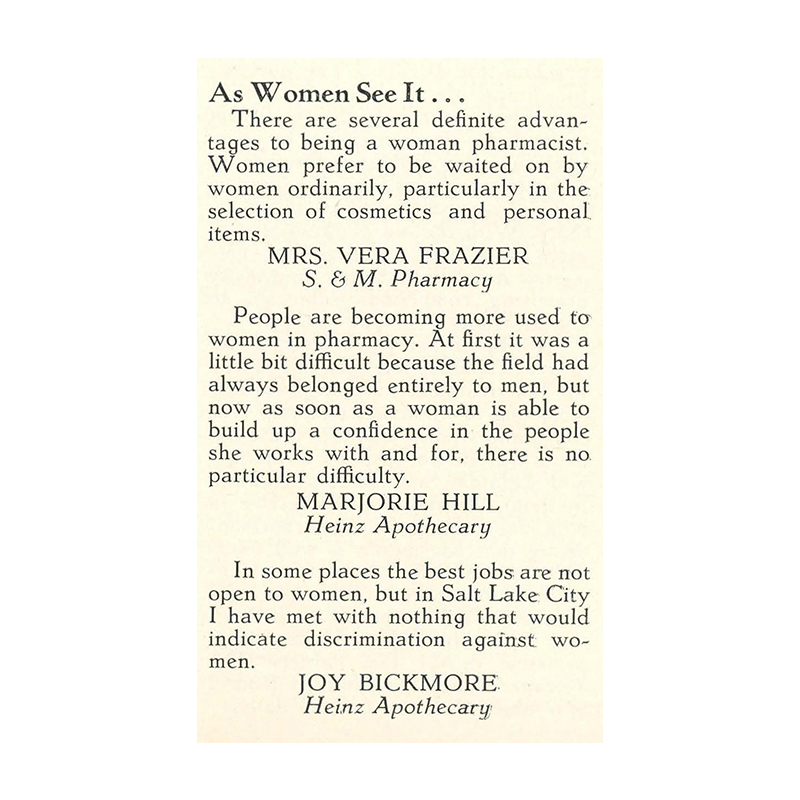
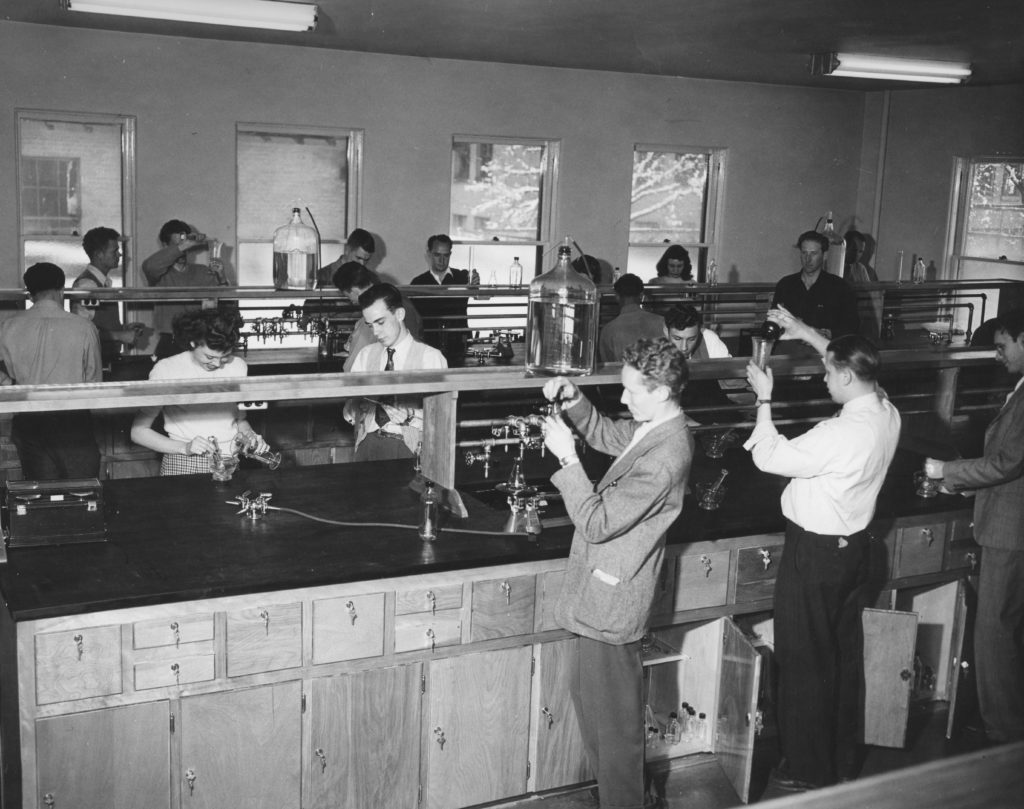
From the beginning, women were welcomed into the College of Pharmacy. In an article that appeared in the first issue of Pharmic-Ute (the official journal of the College of Pharmacy) in 1949, Marybell Fenton wrote that “at the University of Utah women students are met with genuine encouragement and are made to feel that there is a place for any student who has a real interest and is capable of fulfilling the requirements.”
Female students in the college, and female pharmacists on the whole, felt that they met with prejudiced views on a regular basis (for example, see “Prejudice Against Women in Pharmacy”, p.11, Pharmic-Ute, Vol.XI, No.2 – Winter 1959). Statistically, the number of men enrolled far outweighed women (11.8% in 1958, 12 women enrolled in 1959). Yet women who were interested in pursuing a career in pharmacy were offered a pathway forward, and support.
Community and support, in part, took the form of student groups organized by other women at the college. The first to assemble was a local professional sorority, Phi Gamma, organized in 1948 for the purpose of furthering the interest of pharmacy among women enrolled in the school.
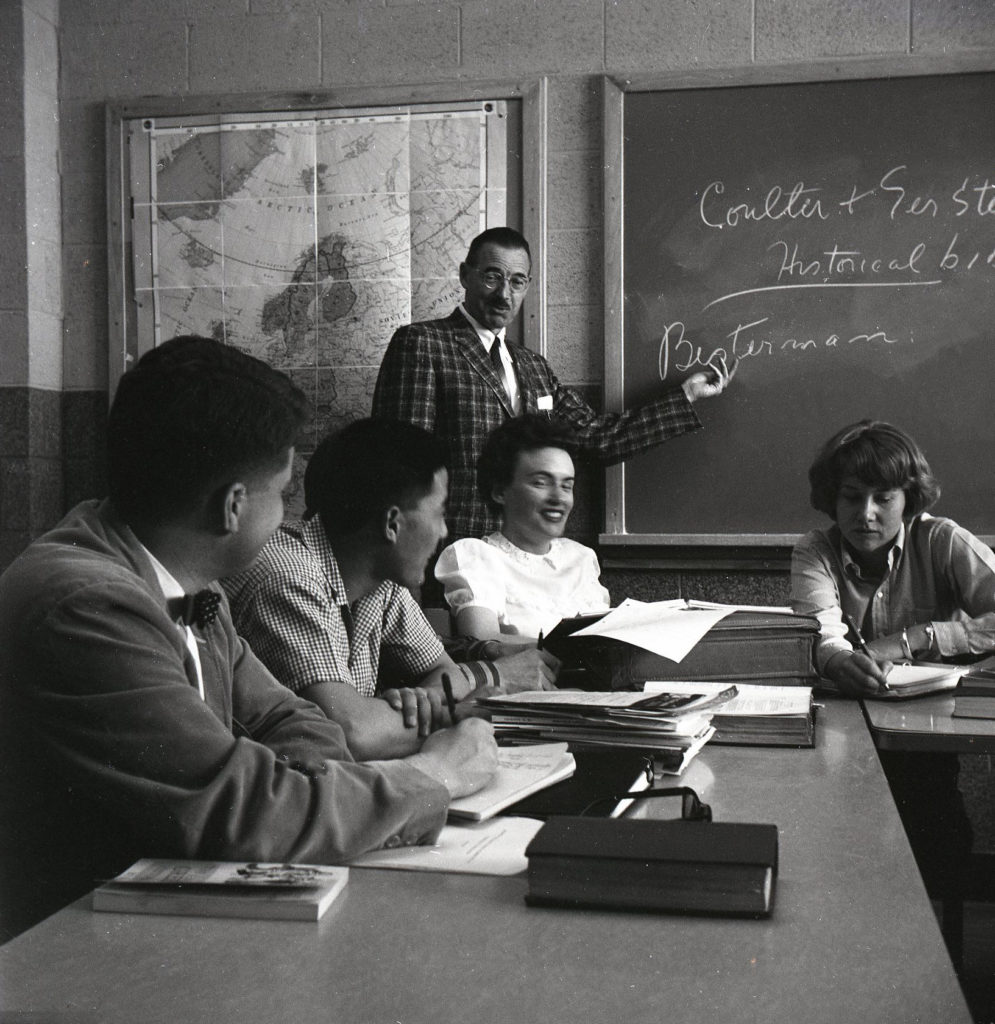
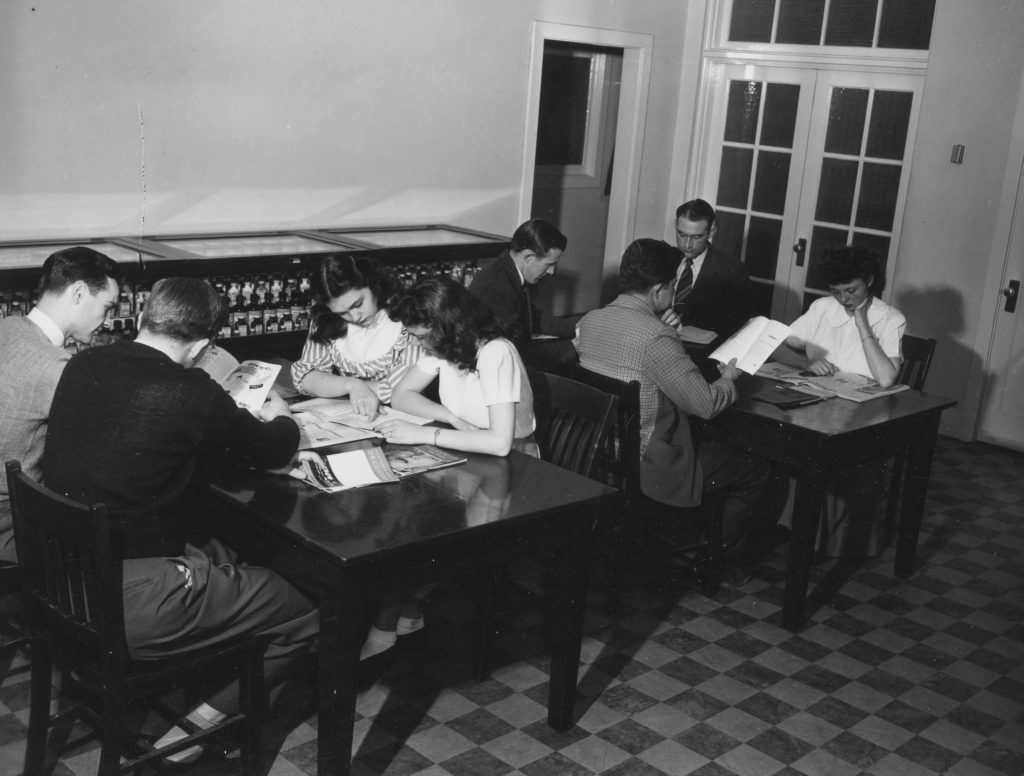
In the spring of 1959 Phi Gamma became an active chapter of the national fraternity for women in pharmacy, Kappa Epsilon. Kappa Epsilon was founded on May 13, 1921, in Iowa City by Professor Zada Mary Cooper and a group of female pharmacy students attending the universities of Minnesota, Nebraska, and Iowa State. The goal of the group was, and remains, to unite women pharmacy students across the United States.
In 1951 a group of wives of male pharmacy students met in an official capacity as the Wives’ (or Ladies) Auxiliary of the American Pharmacists Association Student Branch. In addition to the networking opportunities afforded, women joined the group as an “expression of interest in the future of pharmacy,” with a goal to become better informed about “the profession as a whole, the problems which face all pharmacists and what [can be done] to help solve these problems” (Pharma-Sister Journal, 1966-67).
Image right: Dean of the College of Pharmacy L. David Hiner with the Wives’ Auxiliary group, 1953.
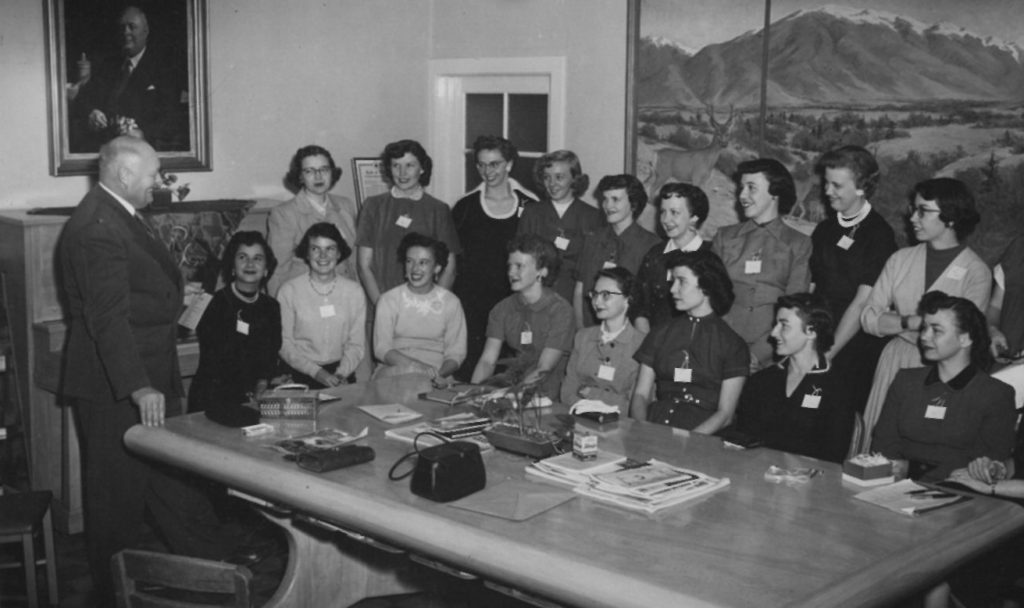
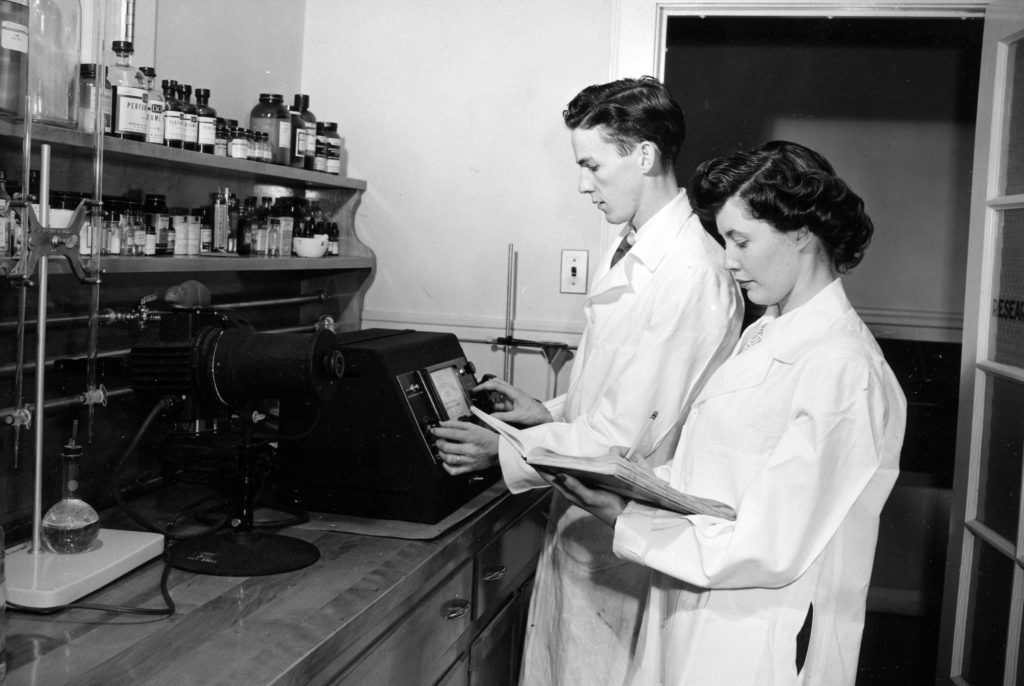
-Explore the College of Pharmacy digital collection:
•College of Pharmacy Bulletin (1949-1980)
•College of Pharmacy Photographs (1945-1978)
•Pharmic-Ute Journal (1949-1978)
•Pharma-Sister Journal (1966)
Images courtesy of Historical Collections, Spencer S. Eccles Health Sciences Library, University of Utah.

